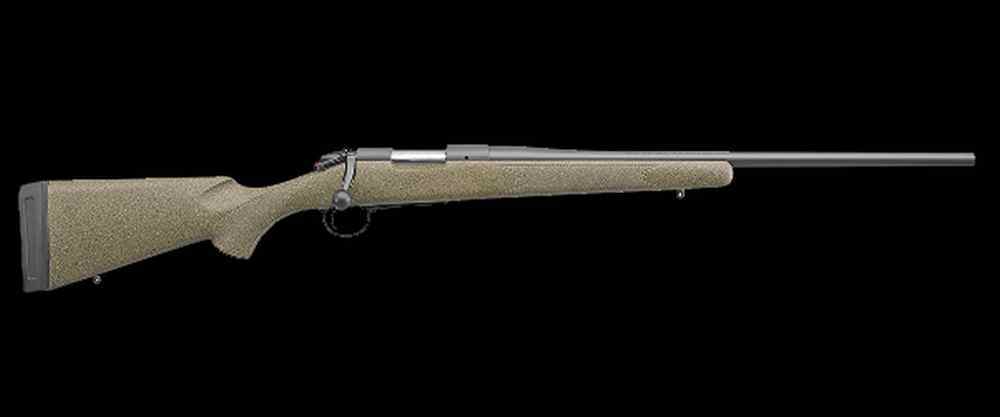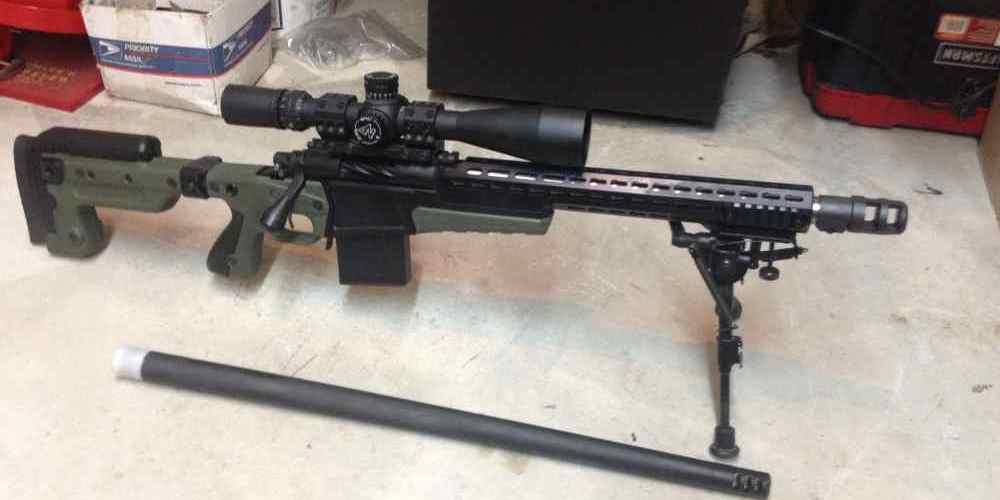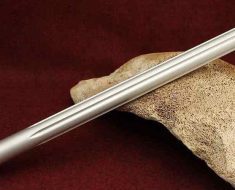“Precision and performance start with the perfect gas port placement and size.”
Optimal Gas Port Placement for Improved Rifle Performance
When it comes to fine-tuning your rifle barrel for optimal performance, one of the key factors to consider is the placement and size of the gas port. The gas port plays a crucial role in the functioning of a semi-automatic or automatic rifle, as it allows gas from the fired cartridge to enter the gas system and cycle the action. Getting the gas port placement and size just right can make a significant difference in the reliability, accuracy, and overall performance of your rifle.
Gas port placement refers to the location on the barrel where the gas port is drilled. The ideal placement of the gas port will depend on a variety of factors, including the length of the barrel, the type of gas system used, and the specific ammunition being used. In general, the gas port should be located close to the chamber, as this allows for more gas pressure to be utilized to cycle the action. Placing the gas port too far down the barrel can result in insufficient gas pressure, leading to cycling issues and decreased reliability.
Another important consideration when it comes to gas port placement is the angle at which the gas port is drilled. The angle of the gas port can affect how efficiently gas is directed into the gas system, which in turn can impact the cycling of the action. A properly angled gas port will ensure that gas is directed in a way that maximizes the force applied to the bolt carrier group, resulting in smoother and more reliable cycling.
In addition to gas port placement, the size of the gas port is also a critical factor in optimizing rifle performance. The size of the gas port will determine how much gas is allowed to enter the gas system, which in turn affects the amount of force applied to the bolt carrier group. A gas port that is too small may not allow enough gas to enter the system, leading to cycling issues and decreased reliability. On the other hand, a gas port that is too large can result in excessive gas pressure, which can cause excessive wear on the rifle components and potentially lead to malfunctions.
Finding the right balance when it comes to gas port size is key to achieving optimal rifle performance. It may require some trial and error to determine the ideal size for your specific rifle setup, but taking the time to fine-tune the gas port size can pay off in improved reliability and accuracy. It’s also worth noting that the size of the gas port can be adjusted by using a gas block with a variable or adjustable gas port, allowing for easy tuning to achieve the desired level of gas pressure.
In conclusion, gas port placement and size are crucial factors to consider when fine-tuning your rifle barrel for optimal performance. By carefully selecting the placement and size of the gas port, you can improve the reliability, accuracy, and overall functioning of your rifle. Experimenting with different gas port placements and sizes can help you find the perfect balance for your specific rifle setup, ensuring that your rifle performs at its best when it matters most.
Importance of Gas Port Size in Barrel Functionality
When it comes to fine-tuning your rifle barrel, one of the most important factors to consider is the placement and size of the gas port. The gas port plays a crucial role in the functionality of your barrel, affecting everything from recoil to cycling speed. Understanding the importance of gas port size in barrel functionality can help you optimize your rifle for peak performance.
Gas port size refers to the diameter of the hole drilled into the barrel to allow gas to escape from the chamber and cycle the action. The size of the gas port directly impacts the amount of gas that is directed back into the system, which in turn affects the pressure and velocity of the bullet as it travels down the barrel. A larger gas port will allow more gas to escape, resulting in increased pressure and velocity, while a smaller gas port will restrict the flow of gas, reducing pressure and velocity.

The placement of the gas port is also critical in determining how efficiently the gas is directed back into the system. The gas port should be positioned at a point where it can capture the maximum amount of gas without causing excessive fouling or wear on the barrel. Placing the gas port too close to the chamber can result in excessive pressure and wear, while placing it too far down the barrel can reduce the efficiency of gas capture.
Finding the optimal gas port size and placement for your rifle barrel requires a combination of experimentation and knowledge. Factors such as barrel length, gas system length, ammunition type, and intended use all play a role in determining the ideal gas port configuration. It is important to carefully consider these factors and make adjustments as needed to achieve the desired performance.
One of the key benefits of fine-tuning your gas port size is the ability to reduce felt recoil. By adjusting the gas port to optimize gas flow, you can reduce the amount of energy transferred to the shooter, resulting in a more comfortable shooting experience. This can be particularly beneficial for high-powered rifles or for shooters who are sensitive to recoil.
In addition to reducing recoil, optimizing your gas port size can also improve the reliability and consistency of your rifle. By ensuring that the gas system is properly tuned, you can minimize malfunctions such as failures to eject or failures to feed. This can be especially important in competitive shooting or hunting situations where reliability is paramount.
Overall, the gas port size and placement are critical factors in determining the functionality and performance of your rifle barrel. By understanding the importance of gas port size in barrel functionality and taking the time to fine-tune your gas system, you can optimize your rifle for peak performance. Experimenting with different gas port sizes and placements can help you find the perfect balance of pressure, velocity, and reliability for your specific needs. So, don’t overlook the importance of gas port size in fine-tuning your rifle barrel – it could make all the difference in your shooting experience.
How Gas Port Placement Affects Recoil Management
When it comes to fine-tuning your rifle barrel for optimal performance, one of the key factors to consider is gas port placement. Gas port placement plays a crucial role in how your rifle functions, particularly in terms of recoil management. By understanding how gas port placement affects recoil management, you can make informed decisions when customizing your rifle to suit your shooting style and preferences.
Gas port placement refers to the location of the hole in the barrel where gas from the fired cartridge is directed to cycle the action of the rifle. The size and placement of this hole can have a significant impact on how the rifle recoils when fired. In general, a gas port that is closer to the chamber will result in more gas being directed back into the action, which can increase the force of the recoil. Conversely, a gas port that is further down the barrel will allow more gas to escape before reaching the action, resulting in less felt recoil.
When it comes to recoil management, finding the right balance between gas port placement and size is crucial. A gas port that is too large or too close to the chamber can result in excessive recoil, making it difficult to stay on target and control the rifle during rapid fire. On the other hand, a gas port that is too small or too far down the barrel may not provide enough gas to cycle the action reliably, leading to malfunctions and decreased performance.
To fine-tune your rifle for optimal recoil management, it is important to experiment with different gas port placements and sizes to find the right combination for your specific needs. Start by selecting a gas port size that is appropriate for the caliber of your rifle and the type of ammunition you plan to use. Larger calibers and higher-pressure loads may require a larger gas port to ensure reliable cycling, while smaller calibers and lower-pressure loads may benefit from a smaller gas port to reduce felt recoil.
Once you have selected a suitable gas port size, consider experimenting with different placements to find the optimal balance between recoil management and reliability. Keep in mind that gas port placement can also affect other aspects of rifle performance, such as accuracy and muzzle rise. By carefully testing different configurations and monitoring how each one affects the rifle’s behavior, you can fine-tune your setup to achieve the best possible results.
In addition to gas port placement, other factors such as buffer weight, spring tension, and muzzle device can also influence recoil management. By taking a holistic approach to customizing your rifle, you can create a setup that is tailored to your shooting style and preferences. Remember that fine-tuning your rifle is a process of trial and error, so don’t be afraid to experiment and make adjustments until you find the perfect balance of performance and comfort.
In conclusion, gas port placement plays a critical role in how your rifle handles recoil. By understanding how gas port placement affects recoil management and experimenting with different configurations, you can fine-tune your rifle for optimal performance. Take the time to test different setups and make adjustments as needed to create a rifle that is perfectly suited to your needs. With a little patience and perseverance, you can achieve a setup that maximizes your shooting potential and enhances your overall shooting experience.
Finding the Right Gas Port Placement for Your Shooting Style
When it comes to fine-tuning your rifle barrel for optimal performance, one of the key factors to consider is the placement and size of the gas port. The gas port plays a crucial role in the functioning of a semi-automatic or automatic rifle, as it allows gas from the fired cartridge to enter the gas system and cycle the action. Finding the right gas port placement for your shooting style can make a significant difference in the overall performance of your rifle.
Gas port placement refers to the location on the barrel where the gas port is drilled. The placement of the gas port can affect how much gas is directed back into the gas system, which in turn can impact the cycling of the action. The goal is to find the optimal placement that allows for reliable cycling of the action without excessive gas blowback or recoil.
One of the key considerations when determining gas port placement is the type of ammunition you plan to use. Different types of ammunition produce varying amounts of gas when fired, so it’s important to choose a gas port placement that is compatible with the specific ammunition you will be using. For example, if you plan to shoot high-pressure ammunition, you may need a gas port placement that allows for more gas to enter the system to ensure reliable cycling.
Another factor to consider when determining gas port placement is your shooting style. If you prefer rapid-fire shooting or shooting in adverse conditions, you may need a gas port placement that allows for more gas to enter the system to ensure reliable cycling under these conditions. On the other hand, if you prefer precision shooting or shooting with reduced recoil, you may opt for a gas port placement that allows for less gas to enter the system.
In addition to gas port placement, the size of the gas port is also an important consideration. The size of the gas port determines how much gas is allowed to enter the gas system, which can impact the cycling of the action. A larger gas port will allow for more gas to enter the system, which can result in more reliable cycling but may also lead to increased recoil and gas blowback. Conversely, a smaller gas port will allow for less gas to enter the system, which can reduce recoil and gas blowback but may also result in less reliable cycling.
Finding the right balance between gas port placement and size is essential for optimizing the performance of your rifle. Experimenting with different gas port placements and sizes can help you find the perfect combination that suits your shooting style and preferences. It’s important to keep in mind that fine-tuning your gas port placement and size may require some trial and error, so be prepared to make adjustments as needed.
In conclusion, gas port placement and size play a critical role in the performance of your rifle. By finding the right gas port placement for your shooting style and preferences, you can optimize the cycling of the action and improve overall performance. Experimenting with different gas port placements and sizes can help you fine-tune your rifle barrel for optimal performance. Remember to consider factors such as ammunition type, shooting style, and desired recoil when determining the best gas port placement and size for your rifle. With some experimentation and adjustments, you can fine-tune your rifle barrel to suit your individual needs and preferences.
Balancing Gas Port Size and Barrel Length for Maximum Efficiency
When it comes to fine-tuning your rifle barrel for maximum efficiency, one of the key factors to consider is the placement and size of the gas port. The gas port plays a crucial role in the functioning of a gas-operated firearm, as it allows gas from the fired cartridge to enter the gas system and cycle the action. Getting the gas port placement and size just right can make a significant difference in the performance of your rifle.
Gas port placement refers to the location of the gas port along the length of the barrel. The ideal placement of the gas port will depend on a variety of factors, including the length of the barrel, the type of ammunition being used, and the intended use of the rifle. In general, the gas port should be located close to the chamber end of the barrel, as this allows for more gas pressure to be utilized to cycle the action.
When it comes to gas port size, bigger is not always better. A gas port that is too large can lead to excessive gas pressure, which can cause excessive recoil, increased wear on the rifle, and decreased accuracy. On the other hand, a gas port that is too small may not allow enough gas to enter the gas system, leading to failures to cycle and other reliability issues.
Finding the right balance between gas port size and barrel length is crucial for achieving optimal performance. A longer barrel will generally require a larger gas port to ensure that there is enough gas pressure to cycle the action. Conversely, a shorter barrel will typically require a smaller gas port to prevent excessive gas pressure.
It is important to note that the gas port size and placement should be tailored to the specific rifle and ammunition being used. Different types of ammunition produce varying amounts of gas pressure, so it may be necessary to experiment with different gas port sizes to find the optimal configuration for your rifle.
When adjusting the gas port size, it is important to do so in small increments and test the rifle after each adjustment. This will allow you to fine-tune the gas port size to achieve the best possible performance without risking damage to the rifle.
In addition to gas port size and placement, other factors such as gas system design, buffer weight, and spring tension can also impact the performance of a gas-operated rifle. It is important to consider all of these factors when fine-tuning your rifle barrel for maximum efficiency.
In conclusion, gas port placement and size play a critical role in the performance of a gas-operated rifle. By finding the right balance between gas port size and barrel length, you can optimize the functioning of your rifle and achieve maximum efficiency. Experimenting with different gas port sizes and placements, and testing the rifle after each adjustment, will help you fine-tune your rifle barrel for optimal performance.






